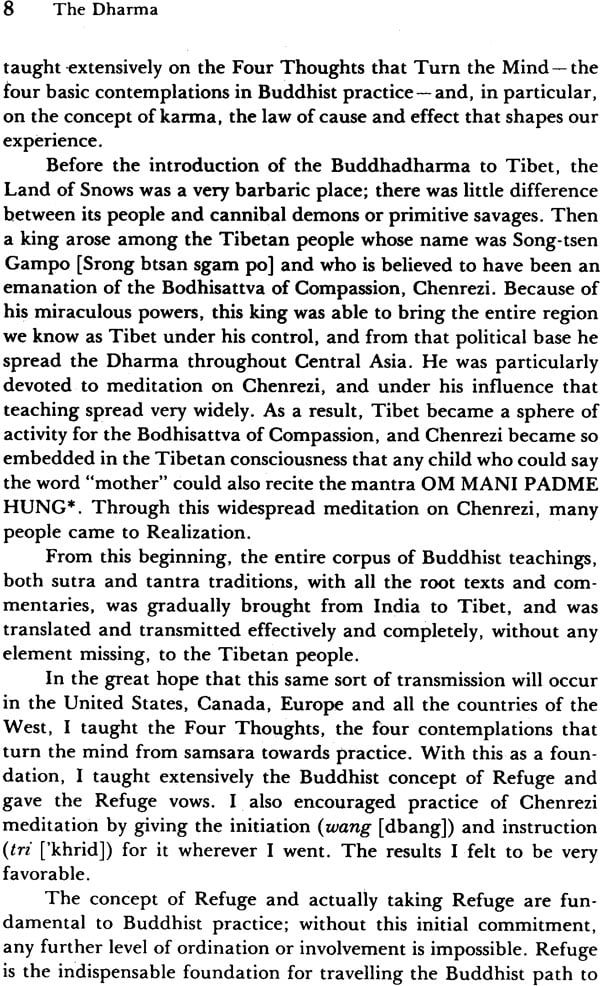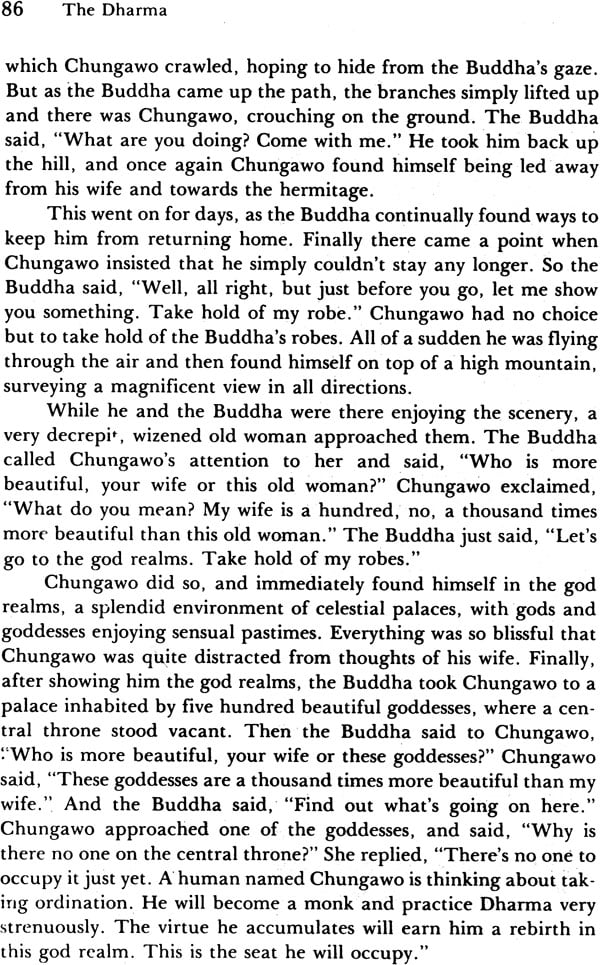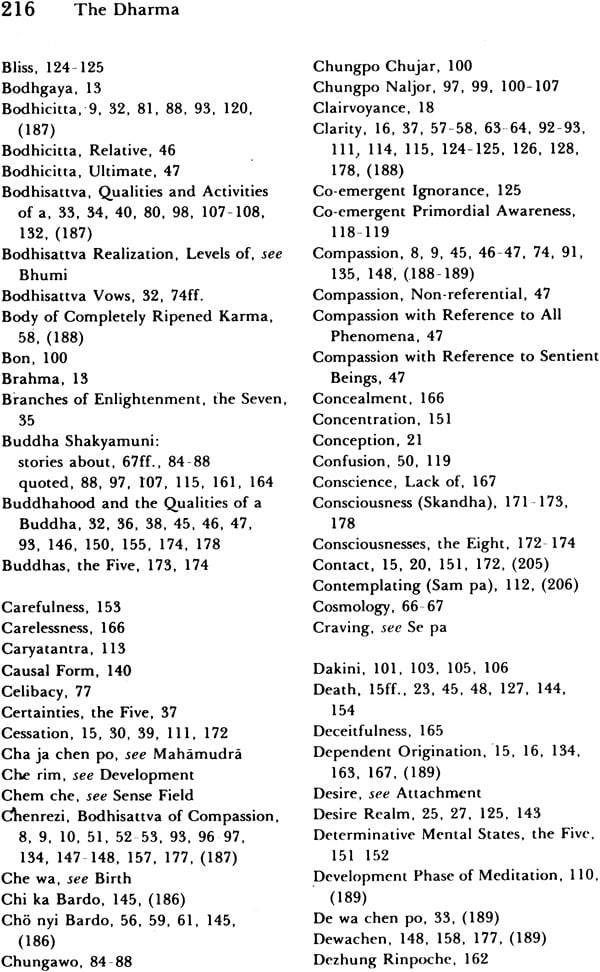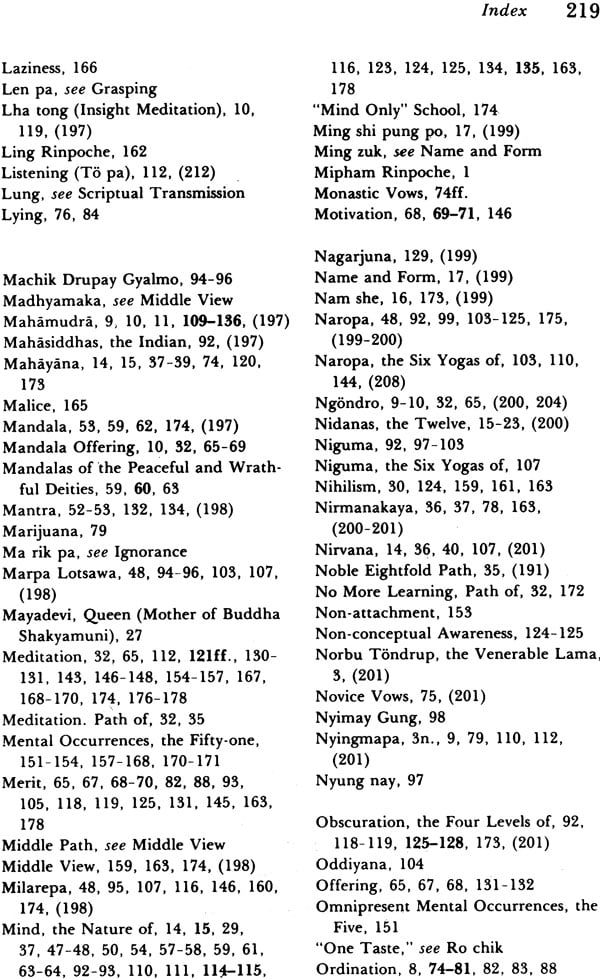Your cart is empty now.
THE DHARMA is the first major collection of teachings by Kalu Rinpoche, a great meditation master in the Tibetan Buddhist Tradition. These discourses ere presented in America with a Western audience in mind, and have been specially edited for this volume. The openness, simplicity, and depth of realization in his teachings have brought inspiration to many, and greater understanding of the wisdom Buddhism has to offer. The topics covered range from the most subtle psychology and metaphysics to everyday life and practice. Readers new to Buddhism will find lucid and profound explanations of the fundamental teachings; those already familiar with Buddhism will discover unexpected insights into the heart of the tradition.
Born in Eastern Tibet, Kalu Rinpoche was trained in monasteries and retreat centers. He spent many years of solitary retreat in remote mountains. Thereafter he was summoned back to the monastery to teach and guide practice. A few years before the Chinese occupation of Tibet, he left the country and eventually settled in India. Since then, he has travelled extensively where his tradition of meditative practice is maintained.
Most of the teachings presented here were given orally by Kalu Rinpoche in 1982 at Kagyu Thubten Choling, his retreat center in upstate New York. They provide an authentic introduction to the foundations of Buddhism as taught in its three Vehicles - the Hinayana, Mahayana and Vajrayana-and offer groundings in Buddhist analysis, conduct, and practice for beginning and advanced students. The compilation is thoroughgoing, and addresses an unusually wide audience: scholars will find here otherwise hard-to-find materials from the Karma and Shangba Kagyu traditions, practicioners will find fundamentally useful methods, and others will find a fascinating account of human and non-human affairs and conditions. Kalu Rinpoche is one of the great meditation masters of the Buddhist tradition, whose teachings have been sought by all four schools of Buddhism in Tibet. The original extemporaneous translations of the teachings gathered here have been edited for the page in such a way as to preserve, at least partially, their oral character. The editors have also tried to preserve this quality in Lama Norlha's ac- count of the Five Skandhas, which combines formal academic ex- position with practical meditation instruction in a way that is characteristic of his lineage. (Lama Norlha. an accomplished meditation and retreat master. is Kalu Rinpoche's representative in the Eastern United States.).
Whenever a teaching is given in the Vajrayana tradition, it is the invariable custom for the teacher to begin by reminding the audience that the purpose of Buddhist learning and practice is to benefit all beings impartially, without exception. This is the idea that Kalu Rinpoche expresses in the title of his book, and this has been our purpose in bringing his teachings to a wider public. May all beings find happiness and be free from suffering.
Kalu Rinpoche was born in the district of Tresho Gang chi Rawa in the Hor region of Kham, Eastern Tibet, in 1905. This mountainous area, bordering on China, is known for the independent spirit of its people. His father, Karma Lekshe Drayang [ka rma legs bshad sgra dbyangs], the thirteenth Ratak Palzang Tulku, was noted for his skill in the practice of medicine, as well as for literary accomplishments and mastery of Vajrayana meditation practice. He and his wife, Drolkar Chung Chung [sgroI dkar chung chung]. Rin- poche's mother, were students of Jamgon Kongtrul Lodro Taye ('jam mgon kong sprul blo gros mtha' yas], Jamyang Chentse Wangpo ('jam dbyangs mkhyen brtse dbang po] and Mipham Rin- poche, all founders and leaders of the ri may [ris med] movement which revitalized the religious life of Tibet towards the end of the 19th Century by minimizing the importance of sectarian differences and emphasizing the common ground of the lineages and stressing the importance of meditation.
Both husband and wife were devoted to practice, and immediately after their marriage undertook a religious retreat. They saw little of each other during this period, but one night together each dreamed that they were visited by the great meditation teacher and scholar, Jamgon Kongtrul, who announced that he was coming to stay with them and asked to be given a room. Not long afterwards Drolkar Chung Chung discovered she was pregnant.
The dream had been auspicious; the pregnancy passed joyfully, without complications. Drolkar Chung Chung continued to work with her husband, and was gathering medicinal herbs with him one day when she realized the baby would soon be born. As they hurried back to their house, they saw the sky full of rainbows.
Such signs were interpreted in the neighboring countryside as portending the birth of a special incarnation. Conventionally, a tulku would have been taken to be raised in a monastery at the earliest possible age, but Karma Lekshe Drayang refused to follow this course. If the boy were not a high incarnation, he said, the training would be wasted; if he were, he would be quite capable of seeking the appropriate teachers and education for himself. That is just what he did.
"In his early years," the young man, "when he had awakened the excellent habits of virtue, and abandoned concerns for possessions and pleasures of this life, wandered at times in the wilderness of mountains and gorges, cliffs and crags. Spontaneously, uncontrived longing and resolution arose in him to nurture Dharma practice." Travelling freely in the mountains, Rinpoche would chant mantras, blessing the animals, fish or insects he might encounter.
At home, his education was supervised, rather sternly, by his father.' After a preliminary training in grammar, writing and meditation, Rinpoche began his formal studies at Palpung [dpal spungs] monastery. at the age of thirteen. At that time, the eleventh Tai Situ Rinpoche, Pema Wangcho Jalpo [pa dma dbang mchog rgyal po], gave him getsul [dge tshul] ordination, naming the young monk Karma Rangjung Kunchap [ka rma rang byung kun khyab]. The prefix "Karma" identifies Rinpoche as a practitioner of the Karma Kagyu tradition, and "Rangjung Kunchap" means "self- arisen, all-pervading."
At Palpung and elsewhere in Kham, Rinpoche studied the teachings of the sutras and tantras, receiving both instruction and empowerments from many of the great lamas. At the age of fifteen. during a yarnay [dbyar gnas], the traditional rainy-season retreat instituted by Buddha Shakyamuni, Rinpoche gave a profound and instructive discourse on the three vows before an assembly of a hundred monks and lay people.
At sixteen, Rinpoche entered Kunzang Dechen Osal Ling, the retreat center (drup khang [sgrub khang]) founded by Jamgon Kongtrul Lodro Taye, one of the two retreat facilities associated with Palpung monastery. Here he completed the traditional three- year retreat under the direction of the retreat master, his Root Lama (tsa way la ma [rtsa ba'i bla ma)) the Venerable Lama Norbu Tondrup [nor bu don sgrub), from whom he received the complete transmission of the Karma Kagyu and Shangba Kagyu traditions.
At the age of twenty-five, Rinpoche departed to do an extended solitary retreat in the desolate mountains of Kham, wandering without possessions, taking shelter wherever he could find it, seeking and needing no human company.
For twelve years he lived like this, perfecting his practice and offering everything to develop impartial love and compassion for all beings. "There is no higher siddhi than Compassion," his Root Lama had said. In this manner of life he would have been content to continue, had Situ Rinpoche not finally sent word that it was time for him to return to the world and teach.
Kalu Rinpoche returned to Palpung and assumed duties as director (drup pon [sgrub dpon)) of the three-year retreats. At this time Rangjung Rikpay Dorje. the late sixteenth Gyalwa Karmapa, recognized Rinpoche as the activity emanation (tin lay tul) ['phrin las sprul)) of Jamgon Kongtrul Lodro Taye. * It was recalled that Jamgon Kongtrul had prophesied that his activity-incarnation would be a ri may master, dedicated to promoting practice and retreat.
In the 1940s he began visiting monasteries, traditional centers of many schools and lineages, all over Tibet, and on a visit to Lhasa gave teachings to the Regent of the young Dalai Lama. In 1955, a few years before the full Chinese military occupation of Tibet, Rinpoche visited the Gyalwa Karmapa at Tsurphu, who asked him to leave Tibet in order to prepare the ground in India and Bhutan for the inevitable exile. Rinpoche first went to Bhutan, where he established two retreat centers and ordained three hundred monks. Proceeding to india, he made an extensive pilgrimage to all the great Buddhist sites. In 1965 he established his own monastery, Samdrup Tarjay Ling [bsam sgrub dar rgyas gling], at Sonada near Darjeeling, where he now resides. A few years after founding the monastery, Rinpoche established a three-year retreat facility there, and has founded others elsewhere in India.
Since 1971 Kalu Rinpoche has travelled four times to Europe and North America, establishing Dharma centers and facilities for Westerners to undertake the traditional three-year retreat. At Sonada in 1983 he gave to the four great heart-sons (tuk say [thugs sras]-i.e., close disciples or successors) of the late Gyalwa Karmapa, as well as to thousands of tulkus, lamas, monks, nuns, and lay people, the great cycle of empowerments called the "Rinchen Ter Dzo" [rin chen gter mdzod] , one of the "Dzo Chen Nampar Nga" [mdzod chen rnam par nga] or "Five Great Treasuries" of teachings and empowerments gathered by Jamgon Kongtrul Lodro Taye.
Kalu Rinpoche's recent activities, and particularly his four trips to the West, are discussed in the first chapter of this book.
| Preface | IX | |
| Introduction: Kalu Rinpoche | 1 | |
| Chapter 1: | Kalu Rinpoche on Teaching in North America | 7 |
| Chapter 2: | The Four Noble Truths | 13 |
| Chapter 3: | The Four Dharmas of Gampopa | 43 |
| Chapter 4: | Bardo | 55 |
| Chapter 5: | Mandala | 65 |
| Chapter 6: | Vows | 73 |
| Chapter 7: | Women, Siddhi, Dharma | 91 |
| Chapter 8: | Mahamudra | 109 |
| Epilogue: | The Eight Thoughts | 137 |
| Appendix I: | The Five Skandhas, by Lama Norlha | 139 |
| Appendix II: | Glossary of Technical Terms | 185 |
| Index | 215 |
Sample Pages
















Delivery and Shipping Policy
- INTERNATIONAL SHIPPING
- Rs.1000-1100/kg
- ESTD. Delivery Time: 2-3 weeks (depending on location)
- Bubble Wrapped with Extra Padding
- NATIONAL SHIPPING
- NCR: Rs. 30/half kg
- Standard: Rs. 80/half kg
- Express shipments also available on Request
- ESTD. Delivery Time: Ranging from 1-4 days up to 7 business days (Depending on your choice of Delivery)
- TRACKING
- All orders; national or international, will be provided with a Tracking ID to check the status of their respective orders
- Depending on the Shipping Service, Tracking ID may be used on their respective tracking portals
Frequently Asked Questions (FAQs)
Domestic Shipping: 3-4 Days (after shipping)
International Shipping: 1-2 weeks (based on your location)
You will receive an email once your order has been shipped or you can email us if you didn't receive tracking details (info@mlbd.co.in)
Every book that we sell is the latest edition except all the rare books
Yes, we do provide free shipping, only on domestic orders (within India) above Rs.1500










![The Rishukyo [Buddhica Britannica Vol.3]: The Sino-Japanese Tantric Prajnaparamita in 150 Verses (Amoghavajra's Version)](http://www.motilalbanarsidass.com/cdn/shop/products/RISHUKYO_large.jpg?v=1675417651)
